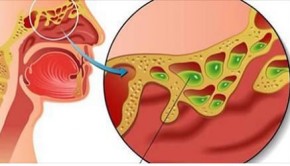Congestion, localized excess of blood in the arteries, veins or capillaries. It is to be distinguished from plethora, or general excess of blood. Congestion or hyperaemia, may be classified as arterial or venous, active or passive, inflammatory or atonic. Arterial or active hyperaemia is caused by the increased flow of blood to a part; it may be inflammatory, when the blood is in excess for the purpose of eliminating irritating substances; or functional, when it is due to the normal action of some organ.
Venous or passive hyperaemia is caused by delay in the return of the blood to the heart; it may be atonic, when it is due to the enfeebled or obstructed state of the circulatory system; or hypostatic, when it is due to the action of gravitation. The last two states are necessarily often associated.
Active hyperaemia may be caused by nervous disturbance due to emotion, as in blushing; by increased functional activity; or by local external stimulation, as the application of heat, poultices, etc. The symptoms are redness in the adjacent parts and a throbbing which eventually becomes painful. If long continued, a possible effect is hypertrophy of the tissues affected, owing to the excess of nourishment; while a sudden hyperaemia may result in the rupture of blood-vessels and the exudation of blood into the neighbouring parts.
Passive hyperaemia may be caused by loss of power in the heart due to old age, debility or valvular disease. It may also be induced by the action of cold which constricts the veins and capillaries without affecting the deeper lying arteries; or by applying a ligature or tight bandage to a limb or other part. The most dangerous conditions are occasioned by embolism, or the blocking of a blood vessel by a fragment of tissue carried along with the blood-stream; or thrombosis, which is the sudden clotting of the blood at some point in the course of a vessel. The surface symptoms of passive hyperaemia include a deepening of the colour to purple.The possible effects are exudation of blood into adjacent parts or necrosis of tissues owing to failure of then nutritive functions of the blood.
Kinds of Congestion In Human Body;You Must Know
Congestion of the lung is a stage of heart disease and of pneumonia, and may occur by reason of the settlement of venous blood in the base of the lung when the heart is enfeebled by old age or the exhausting effects of fevers, etc., resulting in hypostatic pneumonia.
Congestion of the kidney is active when there is irritation from drugs such as cantharides, or from microbic poisons; it is passive in heart and lung disease or when the vena cava is obstructed by tumours.
Congestion of the liver and digestive tract is a normal condition during the process of digestion. It may become excessive through the use of rich or stimulating food.
Congestion at the rectum may lead to the formation food.
Congestion at the rectum may lead to the formation of haemorrhoids or piles.
Congestion of the brain is often due to embolism or thrombosis, in which case it is known as apoplexy and is characterised by varying degrees of loss of consciousness and paralysis according to the site of the vessels Involved.
Congestion is sometimes induced for remedial purposes, as in the application of poultices, hot air, etc.

